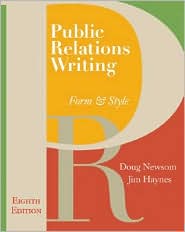Week 4 Reading
By Carl Botan and Vincent Hazelton, 2006
When I first saw the title of the chapter, I was immediately drawn to it as I was wondering to myself what is the difference between grand strategy and strategy. It made me wonder what this chapter was about as it sounded very magnificent and majestic from the words “Grand strategy.” Hence, I decided to do my reading on this chapter to feed my curiosity.
This chapter talks about the 3 levels of planning which are Grand strategy, strategy and tactics, how they are related to one another, and how different they are from each other. It especially highlights the meaning of grand strategy. I found this chapter interesting as it helps to decide which clients or employers are good to work for and which ones should be avoided.
This chapter talks about the 3 levels of planning which are Grand strategy, strategy and tactics, how they are related to one another, and how different they are from each other. It especially highlights the meaning of grand strategy. I found this chapter interesting as it helps to decide which clients or employers are good to work for and which ones should be avoided.
Grand strategy is the policy-level decisions an organization makes about goals, alignments, ethics, and relationship with publics and other forces in its environment (Botan and Hazelton, 2006). This simply means lots of strategy put together to reach an ultimate goal.
Strategy is the campaign-level decision making involving maneuvering and arranging resources and arguments to carry out organizational grand strategies (Botan and Hazelton, 2006). Thus, strategy is always confined to grand strategy.
Therefore, the major difference between grand strategy and strategy is that they are both targeted at different levels of decision-making, where strategy acts as the base of creating a grand strategy. The similarity between both of them is that they both aim to achieve a specific goal of the organization.
Tactics are the specific activities and outputs through which strategies are implemented (Botan and Hazelton, 2006). In other words, it is the small details that make up the big picture-strategy.
The 6 dimensions of grand strategies
There are 6 dimensions of grand strategies that affect PR practices in all organization. They are:
- Organizational goals
- Attitude towards change
- Attitude towards publics
- Attitude towards issues
- Attitude towards communication
- Attitude towards PR practitioners
There are also various forms of grand strategy used in organizations that addresses these dimensions. Examples of such grand strategies are Intransigent, Resistant, Cooperative and Integrative. It is important to note that companies nowadays are adopting Integrative strategy as they want to have a two-way communication with the public.
In conclusion, PR practitioners should be aware of the different types of grand strategy used in various organizations before they choose to work for them. This not only gives them a precaution of the organization, but they will also be aware of how the company works and use strategies that are permissible with the company. It is also important for PR practitioners to know the difference between grand strategy, strategy and tactics as they form the basics of PR.


